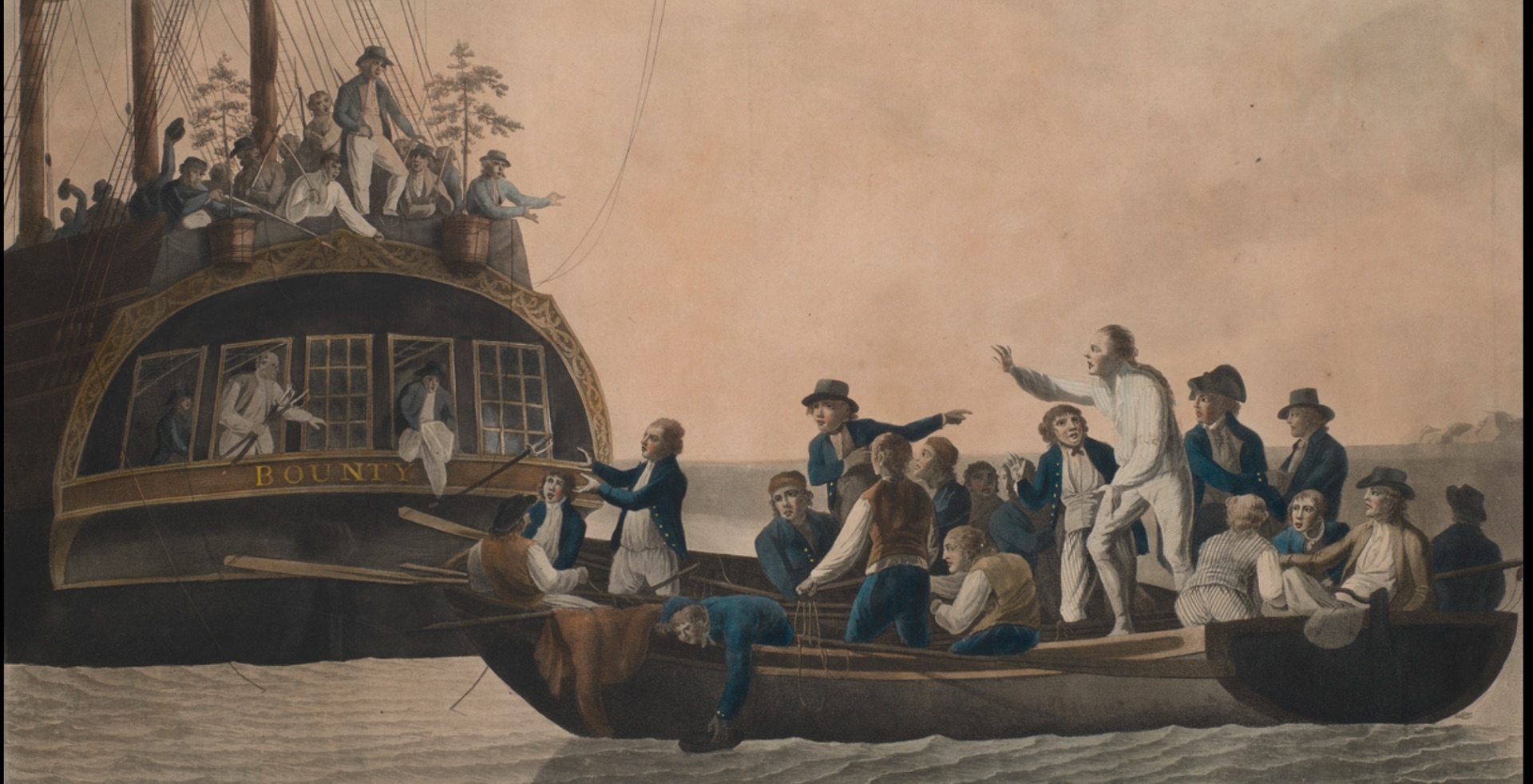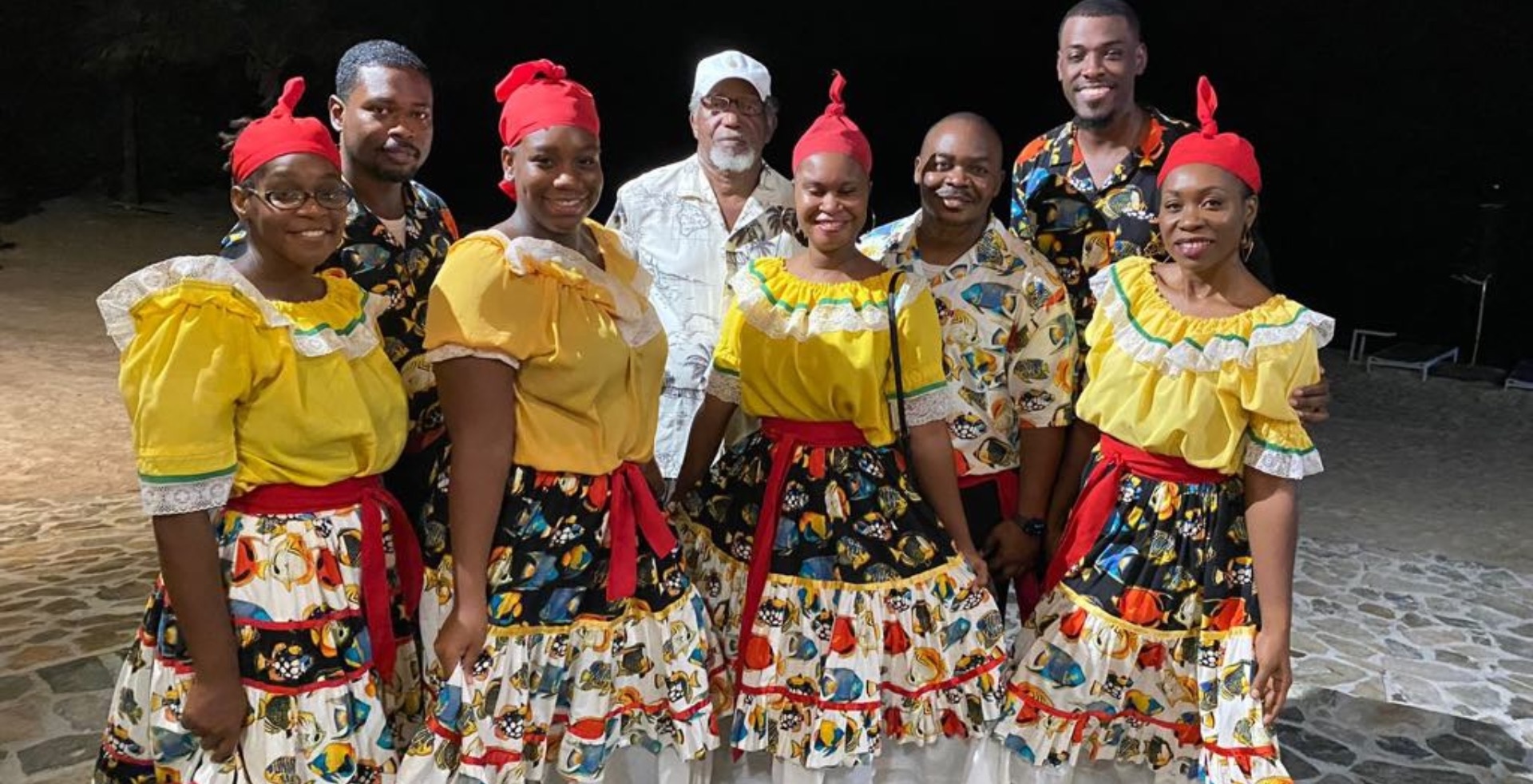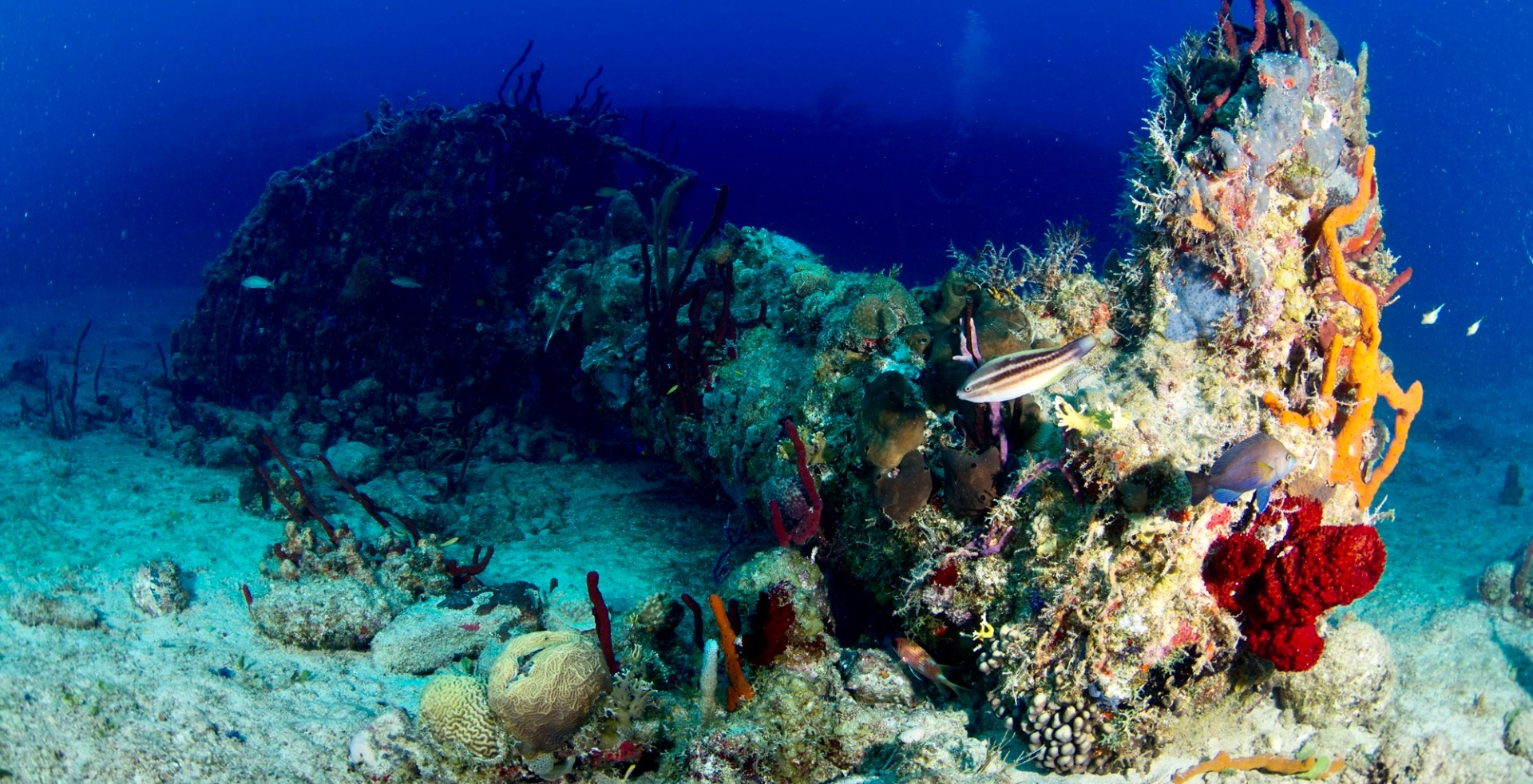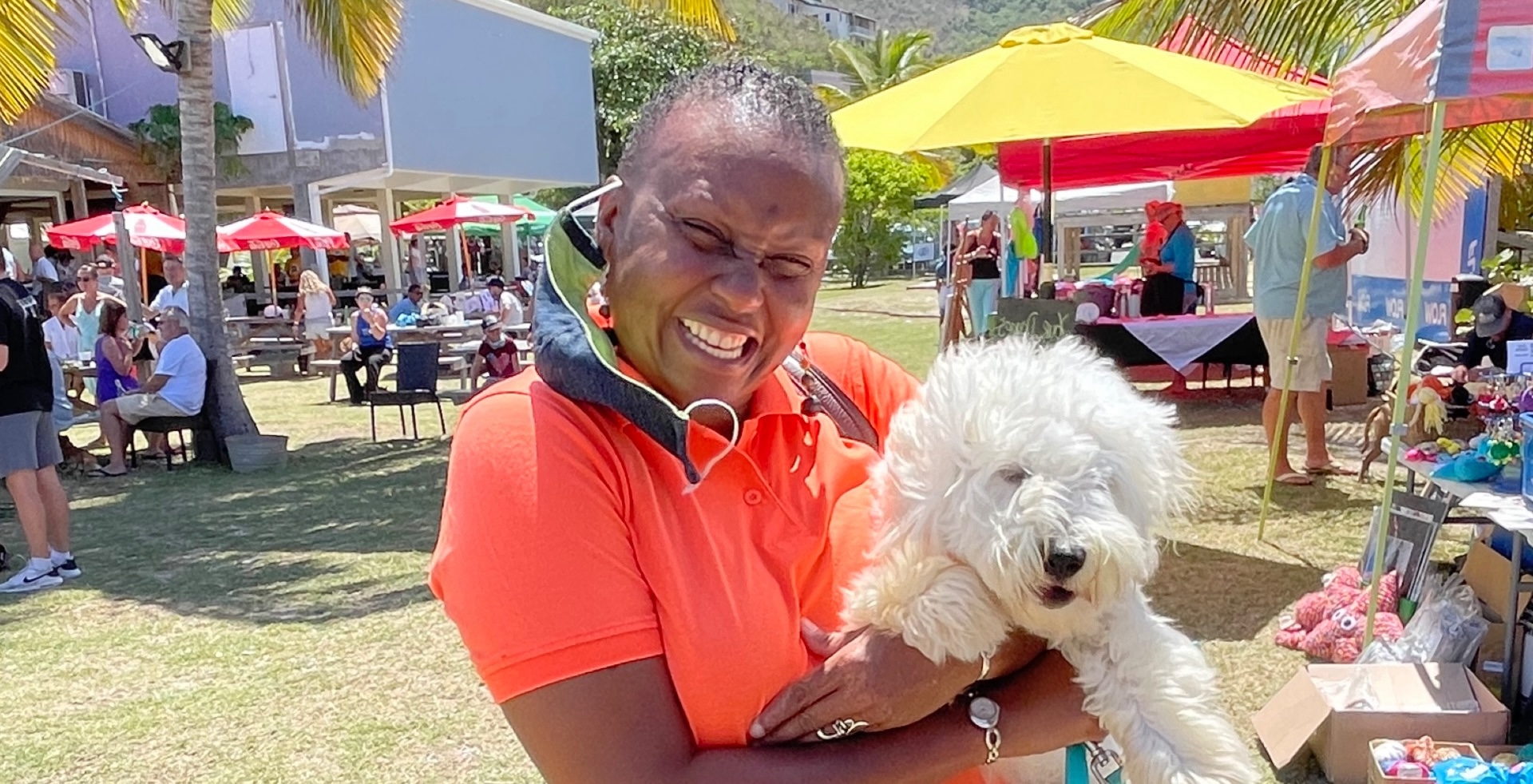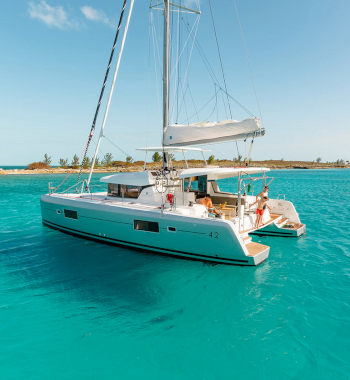Cane Garden Bay’s Callwood Rum
Story and photos by Nancy Read
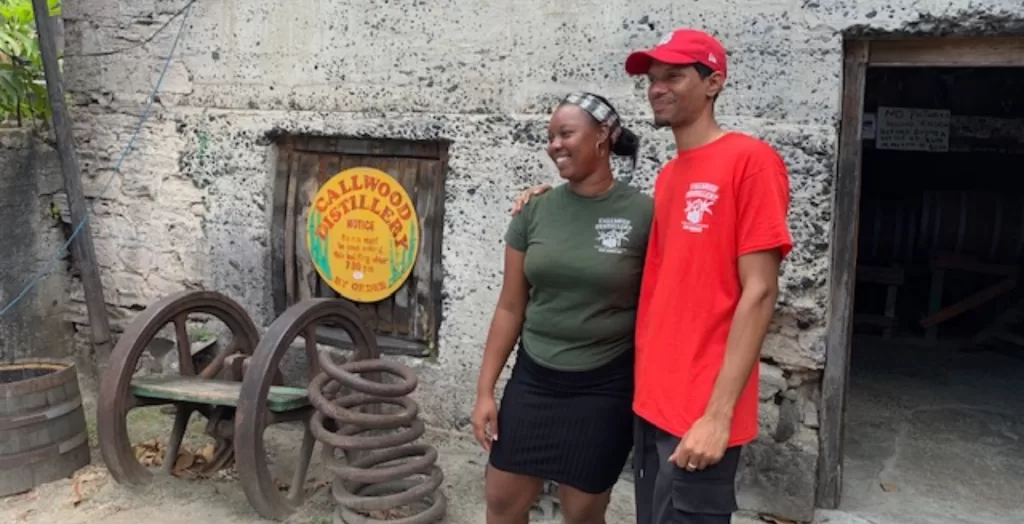
A drive on the North Coast Road on Tortola heading east from Carrot Bay will take you up and down a most dramatic, and somewhat treacherous for the inexperienced, approach into the Cane Garden Bay – one of the most beautiful bays in the BVI. When I have entered the bay on past visits, I kept my views at eye level. Intrigued by its characterful people and local color, I never noticed the “Callwood Distillery” sign that hangs above the road.
The last time I went was different. A neighbor in Florida, who had visited the Distillery many years ago with his wife, had asked me to bring back a bottle of the world-famous Arundel rum. “What makes this rum so special?” I thought. And then I found out after sipping a sample and taking a tour of the centuries old family-owned business.
This BVI rum is not mass produced in a factory. It is distilled and blended in Cane Garden Bay by the extended Callwood family and its dedicated team. They have been using much the same process and equipment for more than 200 years in the Caribbean’s oldest continuously operating pot distillery, still housed in its ancient stone building.
The family says rum has been a product of the BVI since the 1600s. In the 18th and early 19th centuries, the heyday of rum production, 106 distilleries existed in the BVI, 26 of them on Tortola. Today, Callwood’s is the only one still operational.
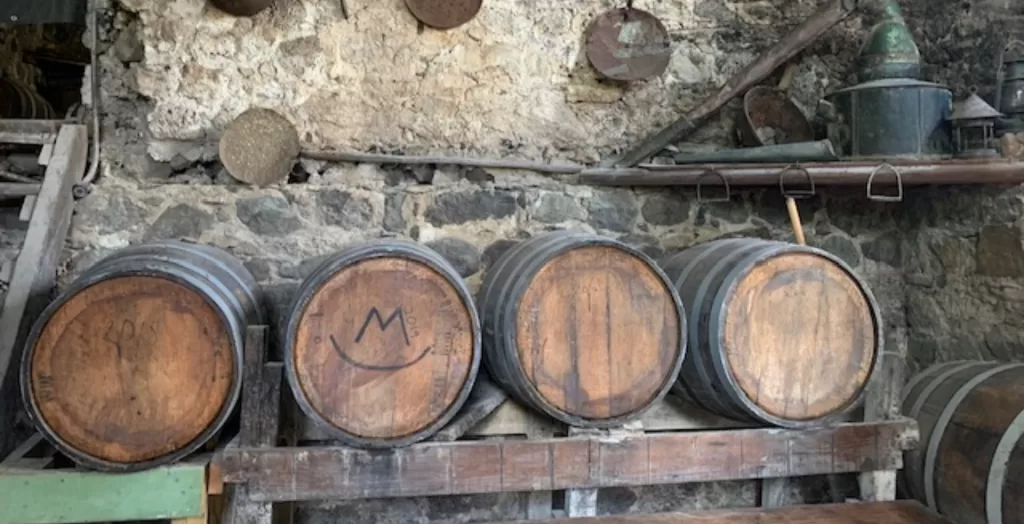
Mark explains how the cane is cut from patches on the side of this lush mountain, with salt breezes blowing, and chickens inhabiting the property. It is beautiful, nestled among fruit trees of papaya and banana. The tall grasses are harvested twice a year, the first harvest just recently having taken place in early March. It is interesting to note that harvesting doesn’t kill the cane, as replanting is as simple as laying the root back down onto the soil.
I was curious about the origin of the word Arundel, which is prominently displayed on the label of every rum bottle. Looking at a 1798 map of plantations on Tortola, I discovered that Arundel refers to Will Arundel who grew sugar on a plantation above Cane Garden Bay. Callwood’s distillery uses much of the same vintage equipment and methods, and produces the same delicious rum today!
Mark Callwood, my knowledgeable tour guide, is a testimony to his ancestry and the dedication of generations before him. They have been growing and harvesting sugar cane for centuries, producing a naturally fermented rum with no yeast or other additives.
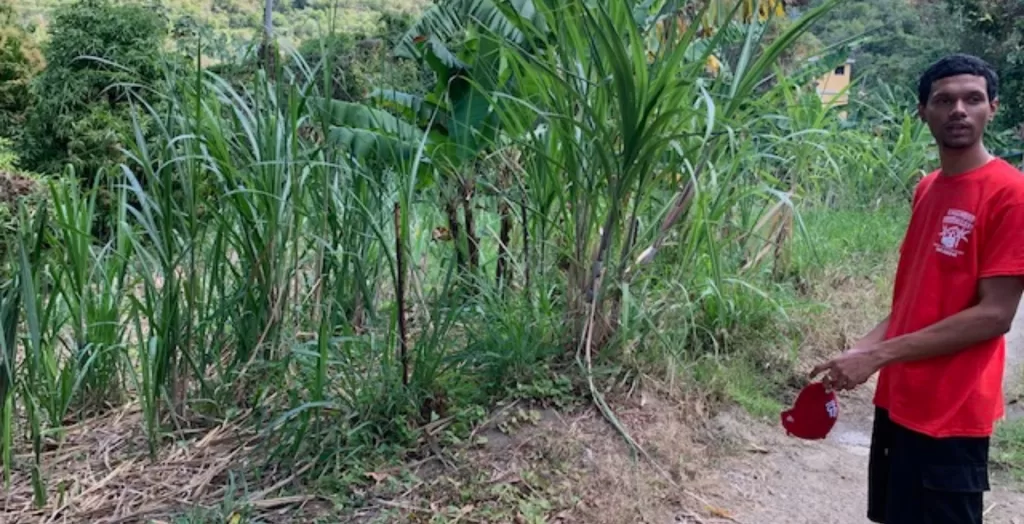
After cutting, the sugar cane is crushed through rollers to extract the juice, powered by a three-cylinder engine to spin the gears. Before the diesel engine, a steam engine was used, and before that, it was a donkey in an animal round, evidence of which can still be seen today.
The next part of the process is the distilling, where the steam heats the ferment to make the raw rum. A worker monitors the distilling process in the heat of the day, obviously a labor of love and dedication. As he tends to the original antique boiler, Mark draws his attention to a drip on the side of the still. It’s all about maintaining pressure, to create a thicker, sweeter liquid, that flows into the original copper pots to boil and to separate the alcohol, which condenses at the head of the still…10% alcohol.
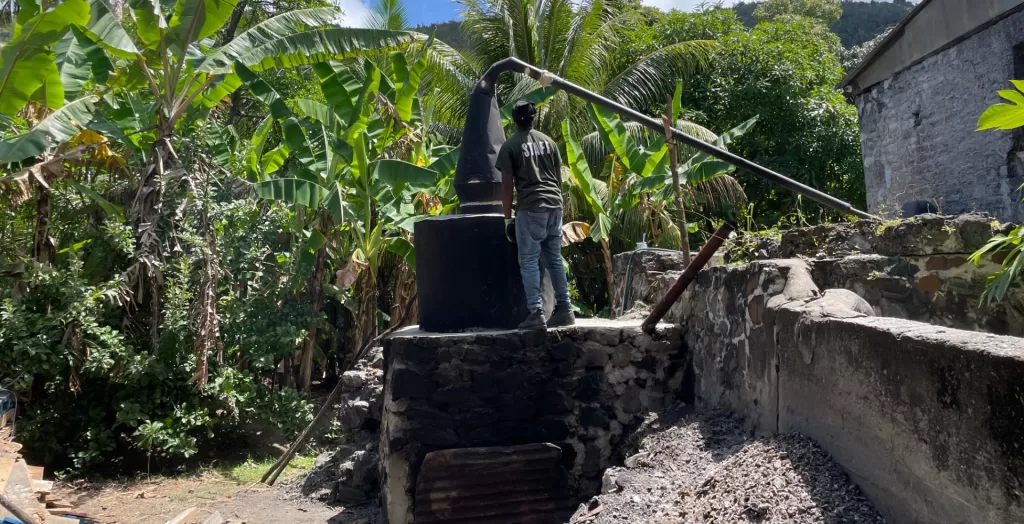
Constant pressure keeps the vapors from escaping, keeping the rum pure and natural, “No headaches, upset feelings, just makes you feel good,” says Mark.
The liquid cane juice is transferred to big white tubs to ferment for a week, then diluted and stored in those traditional oak casks or barrels to age.
The end products, bottled and labeled, are available for sampling and for purchase. The varieties of both light and dark rums, are all blended on site, to offer a selection for sipping or mixing in your favorite cocktail. There is a light sipping rum for ladies, rumored to make them feel sexy, and called the Panty Dropper. Another rum with an herbal root from the Dominican Republic, called Mamajuana, is predicted to make a man get sexy…called the Boxer Remover. Some rums are aged for four years, some for ten. The display of rums is tempting, as I make my selection.
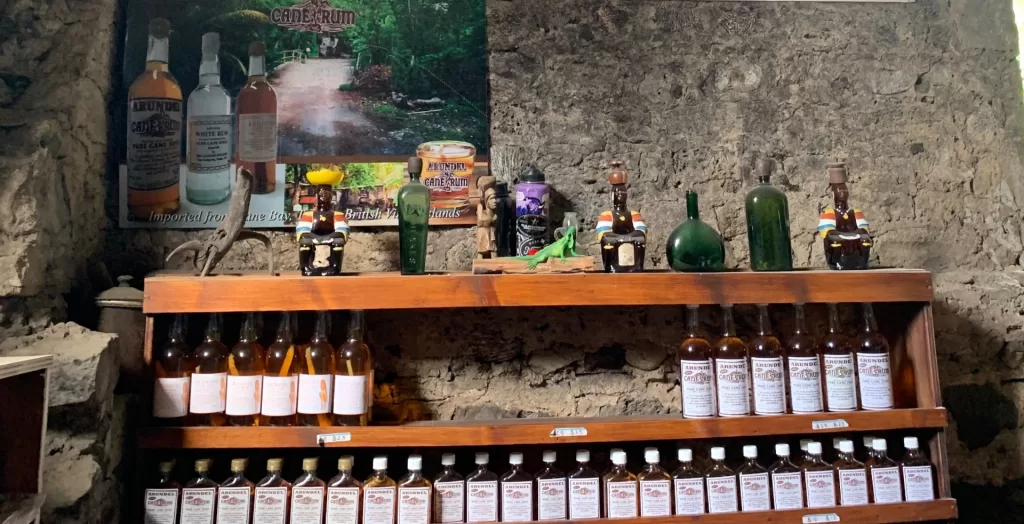
The rum sample I started with at the beginning of the tour was now a fond memory. I enjoyed being brought back in time, examining the relics of a long ago era and the antiques displayed in the museum area of the restored buildings.
Mark, and his sister-in-law, Tamika, make this a place of interest to all, to learn the history of a small, but significant, time in their past… BVIslanders, so eager to share and to be proud of their heritage.
The Callwood Distillery is open daily. It is strongly suggested that you visit before your day on the beach. The rum will enhance your experience! Regards to Mark and Tam! Enjoy!

